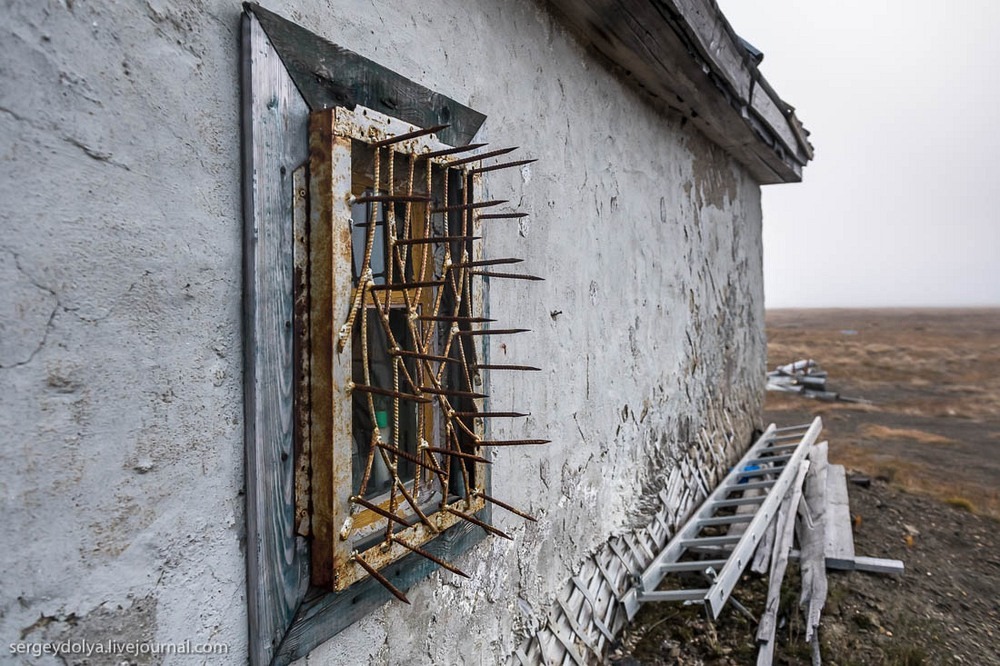Wrangel Island, in the Arctic Ocean, is one of the most remote islands in Russia.
Warning signs posted on the door remind people to watch out for bears when venturing outside.
Spiked windows are required on Wrangel Island to thwart polar bear attacks.
The bears also come here to give birth and raise cubs and prepare them for the next winter.
The polar bear is actually a marine animal that love to spend its time in the water.
Its preferred habitat is sea ice that covers the waters over the continental shelf and the Arctic Ocean.
The number of bears that arrive on Wrangel Island each year is also increasing.
Today the island is littered with remains of the wooly mammoth such as tusks and bone fragments.
A tusk of a wooly mammoth lies on a stream on Wrangel Island.
By the 1980s, reindeer-herding on Wrangel was abolished and the two settlements there were relocated.
The island gained UNESCO World Nature Heritage Status in 2004.
What feels like sheep from the distance are actually polar bears.
They are forbidden to posses weapons, but they docarry flare gunsand pepper sprays.
Communication to and from the island is via radio signal, when conditions permit.
Electricity is provided by diesel generators but the supply of fuel is not always guaranteed.
Today, Wrangel Island is one of the least visited andmost restrictednature reserves in the world.
Tourist require special permit from the Russian authorities, which some say is a rather difficult process.
An abandoned village on Wrangel Island.
The residents were evacuated after Wrangel Island was declared a Nature Reserve.
Photo credit: Sergey Dolya
An abandoned cabin on the site of a former settlement on Wrangel Island.
Photo credit: Sergey Dolya
A window protected by metal spikes on Wrangel Island.
Photo credit: Sergey Dolya
A polar bear peeks inside a cabin on Wrangel Island.
Photo credit: Gorshkov Sergey









